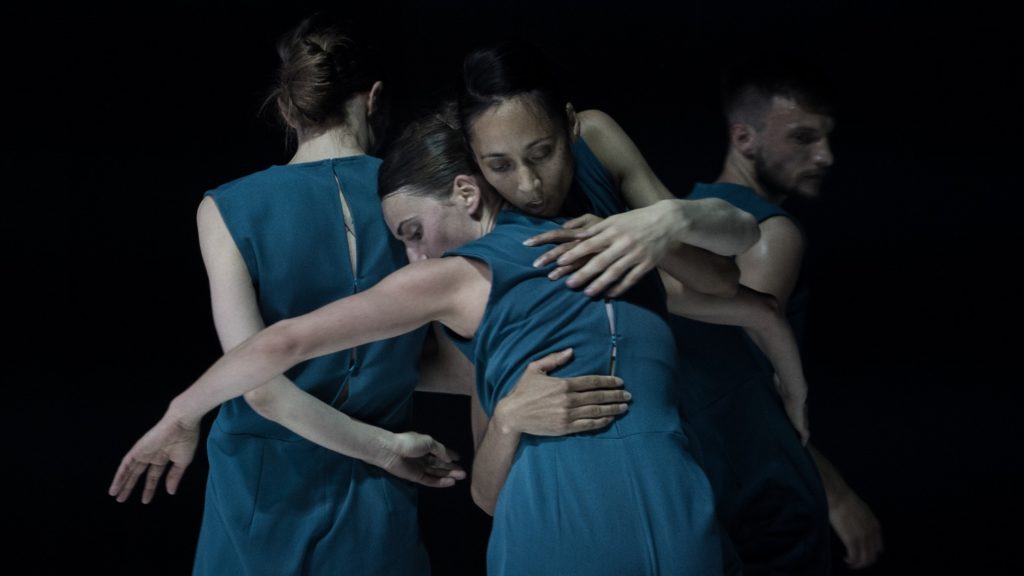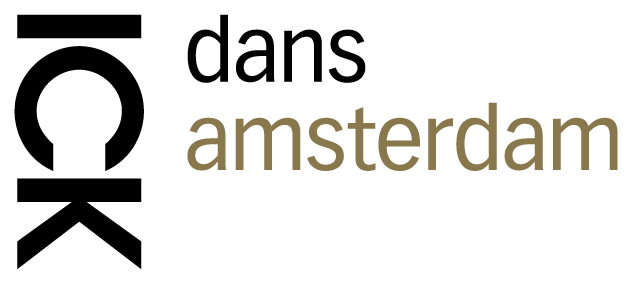Like ICK, Amos Ben-Tal is always curious about what the body does and knows. Although he makes precise choreographies, he lets his dancers fill them out; after all, everyone has his own past, fantasies, and instincts which make every person’s body move differently.
The Israeli-Dutch choreographer Amos Ben-Tal started dancing at the age of 13. He completed his studies in Toronto and danced nine years with Nederlands Dans Theater before he started choreographing with Korzo Productions in The Hague. He set up his own collective OFFprojects and became artist-in-residence at ICK. Together with his own dancers and the ensemble of ICK, he created the performance ‘60‘ that premiered last year at Julidans. In the coming months, 60 travels to several theatres in the Netherlands.
Now you’re collaborating with ICK; how did that come about?
‘I’ve known Emio and Pieter, the founders of ICK for a number of years. I was always at production house Korzo where they often visited to watch. Last year I took part in a program of ICK and I saw the great environment they create for their dancers and company. Their work is quite different from mine aesthetically, but I feel at home with the curiosity about the body and the emphasis on doing research. Funnily enough, I developed a training method myself that’s based on breathing, like the Double Skin/Double Mind method developed by Emio and Pieter. In my training the focus is on breathing low down in the pelvis and with ICK, by contrast, it is high in the chest.’
And now you’re artist-in-residence and you’re making the performance ’60’.
‘That’s right. Last year I was one of the choreographers taking part in 7EVEN. Like all the other participants I created a seven-minute performance, but then I divided those up further into seven one-minute fragments. During that process, I thought about time and how we experience time. Because of the seven-minute constraint we had, the sensation of time was strange. That 7.45 minutes I made seemed to last a lot longer.’
And that gave you the idea for your new piece?
‘Yes, I began to think how strange it really is that we’re keeping time. The sun that rises and sets is a circular process, just like everything in nature, in fact. Linear time is typically something humanity has thought up. The fact that we have time zones and a standard time is already quite absorbing to me, but more interesting still is the fact that we can have different sensations of time anyhow: one minute in a large empty hall can last much longer than a minute at your table with your best friends.’
What is so fascinating about that?
‘I find it crazy that time can be so universal – we all know how many minutes there are in an hour – and yet so extraordinarily personal. Time appears so scientific and objective and yet everyone has a completely different idea of the same time you experience.’
And how will that be shown in the performance?
‘During the hour that we have, the audience will experience sympathetically via the body of the dancer how time passes, individually as well as collectively.
Is it a plea for more mindfulness, for living in the moment?
‘Oh no it isn’t: that linear time with a present and a future also makes that you can reflect on time, learning from experiences and so planning ahead and having hope of improvement. Since the feeling is important, too, I think you can use both approaches. Awareness of time brings fear and positivity at the same time.’

The theme of the body in revolt, what does that mean to you?
‘To me, it is a phrase I very much like the sound of. I think that dancing is in itself a type of revolt. That’s because in dance so much attention is given to the body, to subtlety and complexity. That’s a very unusual thing in our society and that already makes it a form of rebellion.’
And what’s it like to work with the dancers of ICK instead of with the dancers of your own company OFFprojects?
‘It’s fun! A whole new experience, for I worked with my collective for the past seven years and we’ve built up a blind trust. Now we’re working with my own dancers and the dancers of ICK together and luckily the atmosphere is fairly similar; a quest for the origin of movement and instincts. We’re not just thinking about capacity – like how far can you bend your leg? – but also about the intention of the body: how does a body get its information and how does that translate into movement?
How do you work with the dancers?
‘I always work with improvisation as well as predefined dance. Mostly I describe a process and provide instructions in physical form. That then deals with a direction or a weight, so for instance that you must move your feet in a particular direction, or fling your shoulders sideways. But how that is executed precisely, that is for the dancer to decide. I may have an idea, but there’s absolutely no need for it to look the same. More than that, I’m curious about how the dancer does it. Because that depends on his past instincts and fantasies and naturally it’s much more interesting to watch what that person does with it.’



0 Comments